
Servicing Food Service
February 28, 2023 | By Doug Picklyk
Restaurants provide a great source of repeatable business for plumbing pros.
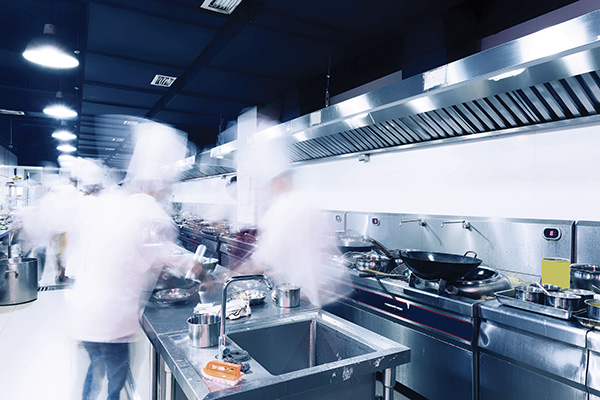
(Getty Images)
The restaurant business is fast and furious, their operations must run like clockwork to keep services running smooth, and plumbing professionals play an essential role in avoiding disruptions that can cause delays or even lead to shut downs.
The food services industry has been hit hard in recent years. Restaurants Canada, the national association representing the food service industry, foresees only moderate growth for the sector through 2023 as its members are still recovering from nationwide lock downs and continued hesitancy from consumers to return because of the pandemic.
According to an association survey, 75% of its table-service members were still in debt in September 2022, and of those over half (54%) said it would take at least 18 months to recover. And with growing inflation, supply chain issues and staffing shortages, margins remain very tight across the industry.
For this reason, among others, restaurants of all types need to keep their doors open and save on operating costs where they can.
For plumbers, the restaurant and hospitality industry represents an opportunity for regular service and maintenance contracts that can help businesses avoid potential catastrophe, and plumbing and heating pros can also share their knowledge to help find efficiencies and keep operations running smoothly.
It’s also an industry that demands reliable, capable and oftentimes emergency service for items unique to the restaurant business.
Getting In The Door
Between their constant cycle of prepping, cooking and cleaning, restaurants use a lot of water, and they are notorious for what ends up going down the drain. As a requirement, operations require regular backflow valve check-ups, a service that can be a plumber’s foot in the door.
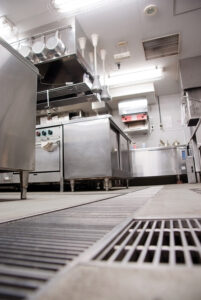
(Getty Images)
Some contractors will even discount that service to get the job and place their tag on the equipment, so their name is there when the next service call is required.
When it comes to piping in a commercial kitchen, drainage is a key concern, and drains need to be installed in the proper locations to ensure adequate flow and to avoid potential bacteria growth from stagnant liquids and food debris.
Whether regular floor drains or linear trench drains, the drainage system needs to be corrosion resistant, able to handle extreme temperatures and provide ease of maintenance.
Restaurant drains, if not inspected and cleaned regularly can lead to serious problems, so regular drain cleaning contracts as a preventative maintenance service is a key opportunity for plumbers, serving like insurance for restaurants.
And then there is also the required grease interceptor/grease trap for restaurants. Plumbing businesses can become experts in the installation and maintenance of interceptors, with some crews even offering clean-out services.
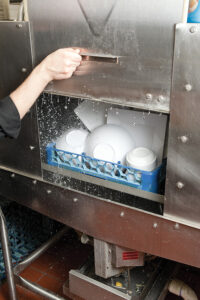
(Getty Images)
Hot Water Demand
Commercial kitchens are water hogs, and the demand for hot water is essential. With health certification requirements, if the hot water goes down an entire restaurant can be shut down.
Understanding the hot water demands of a restaurant, along with the ability to maintain and recommend the best solution for owners, is essential.
For small quick service restaurants (QSRs) tankless solutions or small tank heaters can maximize limited space requirements. However, it’s also important to understand when and where a tankless solution is the best fit.
“Restaurants are often cramped for space, so they want to have a tankless for space savings, but the problem with tankless in some restaurants—especially if they have those dishwashers with the sprayer, which most restaurants have—is that constant on/off is really hard on them,” says Steve Goldie, a regular contributor to HPAC and a plumber for 21 years who now works on the wholesale side of the business.
While tankless water heaters provide efficiency because they’re not storing hot water, he suggests the efficiency can be compromised by the constant starting and stopping which can shorten the life-span of the equipment. Yet modern industrial, commercial, tankless systems have been developed to handle the rigorous demands of restaurant conditions.
Does electric water heating versus gas-fired appliances make a difference? Goldie suggests that sometimes electric is the only option, because a lot of restaurants are in buildings or in places where you can’t get venting out for a gas appliance.
And if electric water heating is selected, be sure to check the amperage of the building, in some cases the storage of a tank may be required, notes Goldie. These are all considerations necessary to ensure the solution chosen will be both efficient and reliable.
And the other potential problem with gas-fired equipment in some restaurants is a negative pressure issue, says Goldie. Because of the massive draft hoods over the cooking equipment, restaurants are always exhausting so much air they may not have enough make-up air, and that negative pressure issue can be a problem for boilers or any combustion equipment that is not seal combusted.
Restaurants also need water temperatures that can sterilize. In some cases they may require an electric booster heater in addition to the water heater, a unit they may place next to a dishwasher for example, to do the sterilization cycle—where they have to get temperatures up above 170F.
Specialty Services
The food service industry requires durable commercial-grade faucets and fittings for all aspects of water delivery, whether that’s in the kitchen in terms of pot fillers at the stove, pre-rinse or wash down fittings for dish prep, glass fillers in a bar area, and even hand washing faucets for staff.
In restaurants there are also many specialty machines and technologies specifically around dishwashing, glass washing, food prep station sinks and sprayers, as well as under counter bar sinks, faucets, glass washers and dishwashers that opportunities abound.
These products all get a lot of use and require regular maintenance. “Someone who’s specialized in servicing these machines, there’s a ton of work for them,” says Goldie. “Because when they break down, the restaurants need them fixed right away.”
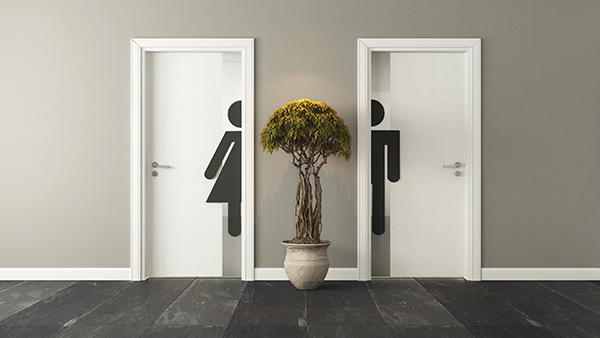
(Getty Images)
Washroom Trends
In any restaurant, the customer experience continues well beyond the design of the dining area or the quality of the table service. From retail food courts to high-end restaurants, the customer experience is impacted by the washroom, where cleanliness and overall appearance make an impression, and can have an impact on customer spending (see sidebar at end of article).
“In high-end hospitality, the washroom is as much a statement as the rest of the restaurant,” notes Will VanderBurgh, business development manager with Dobbin Sales, a master distributor for many commercial plumbing brands in the hospitality sector.
VanderBurgh focuses on the architectural and design space, and has seen recent success in the quick service restaurant segment, supplying a national hamburger chain with custom lavatories. He notes that in the QSR landscape the washrooms may not be as full featured as a fine-dining restaurant, yet they will still have the durable, easy-to-maintain faucets and fixtures with clean lines.
The focus in most public-facing washrooms is to be user friendly (for both the customer to use and restaurant staff to clean) and eco friendly (for both the impression that makes on the customer and the economics of the restaurant).
Many sources point to some common trends in washroom design within the hospitality industry, all geared to improving the customer experience:
- Sustainability: many hotels and restaurants are incorporating sustainable elements such as well-marked low-flow toilets and faucets along with natural and organic materials in the design.
- Technology integration: touchless fixtures, digital mirrors, and smart toilets are being incorporated to impress and improve the guest experience and make the washroom more efficient.
- Minimalistic design: clean design is becoming increasingly popular in washrooms, with simple lines and neutral colours creating a sense of calm and relaxation for guests.
- Wellness: restaurants are incorporating wellness elements into their washrooms, such as aromatherapy to help create a more relaxing and rejuvenating experience for guests.
- Accessibility: accessibility features to accommodate guests with disabilities is also a must.
One product that incorporates many of these washroom trends is the integrated sink systems that incorporate a hands-free soap dispenser, touchless faucet and air dryer all in one.
VanderBurgh has seen these products installed in a range of spaces, from higher-end retail food courts to fine dining restaurants.
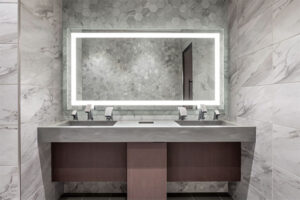
Integrating touch-free fixtures so customers can soap, rinse and dry all in at the sink basin. The AER-DEC from Sloan (pictured here) is one example of three-in-one design that keeps restrooms tidy and requiring less cleaning.
The technology provides sleek convenience for the guest in a hygienic and efficient system, while overall cleanliness for the washroom improves because guests do not have to walk with wet hands to a separate dryer or towel dispenser—so restroom floors require less cleaning.
The role of the plumber in restaurant washrooms doesn’t change too much from other public washroom facilities (or residential washrooms), where regular maintenance and emergency service may still be the primary calls. But being aware of new modern integrated technologies and becoming familiar with their unique servicing needs can place some plumbers ahead of the competition.
The food service industry, where water flow is critical, can be a very demanding sector for plumbing professionals, while also being full of potential for those who specialize in the field. <>




